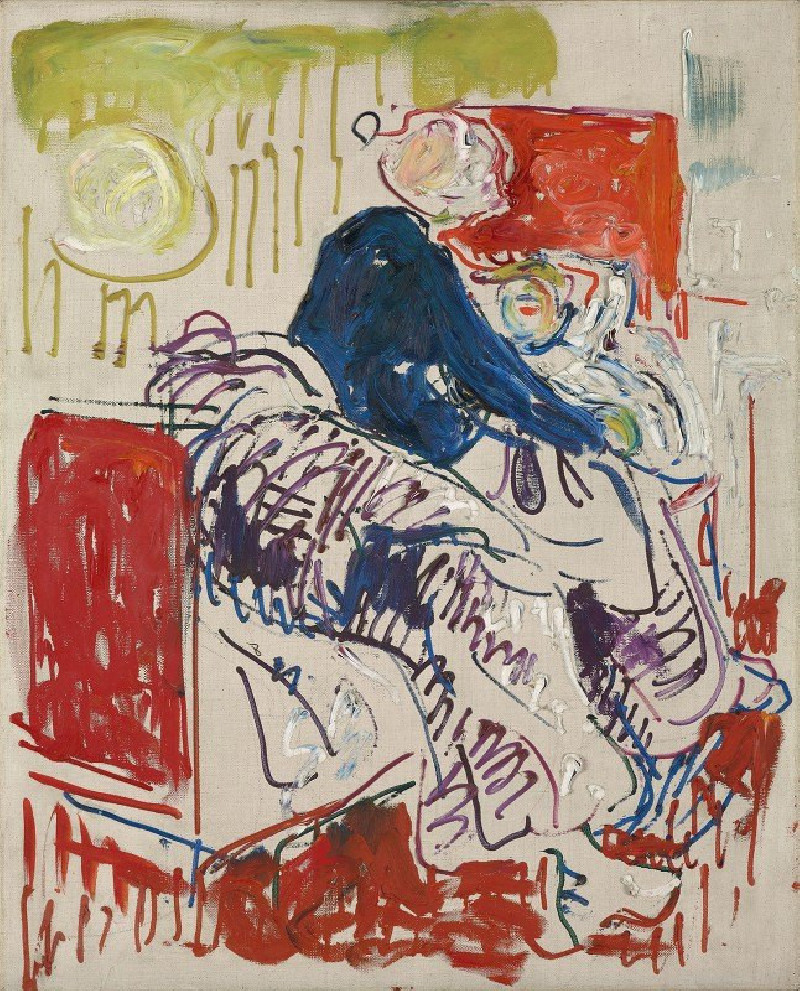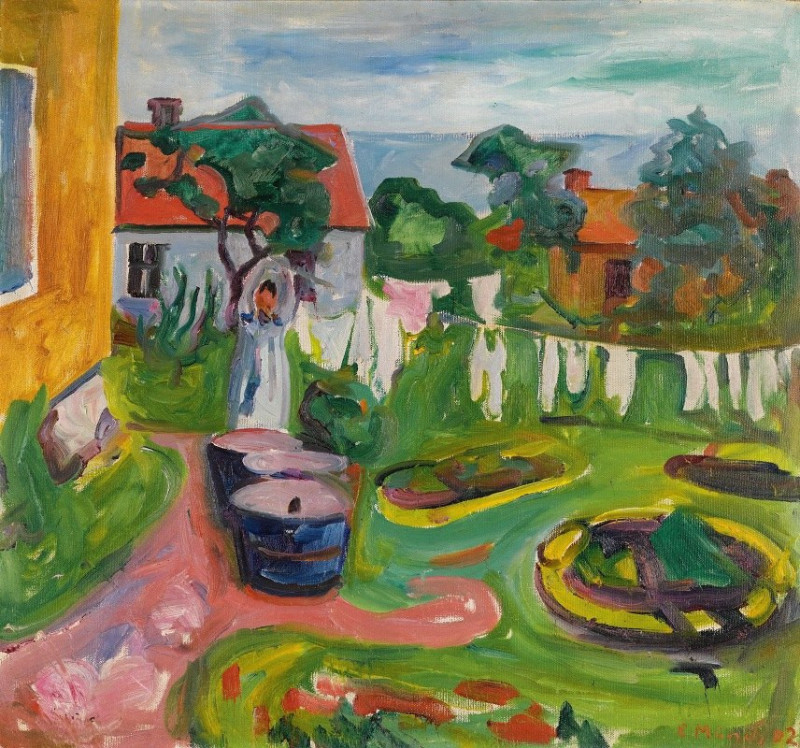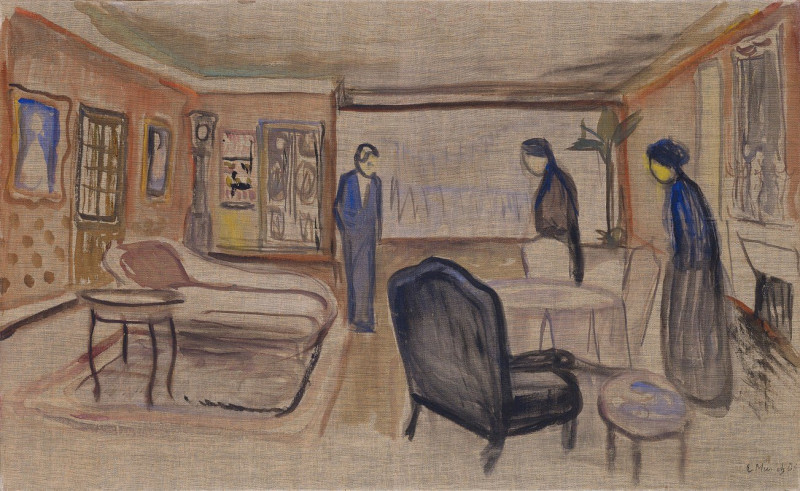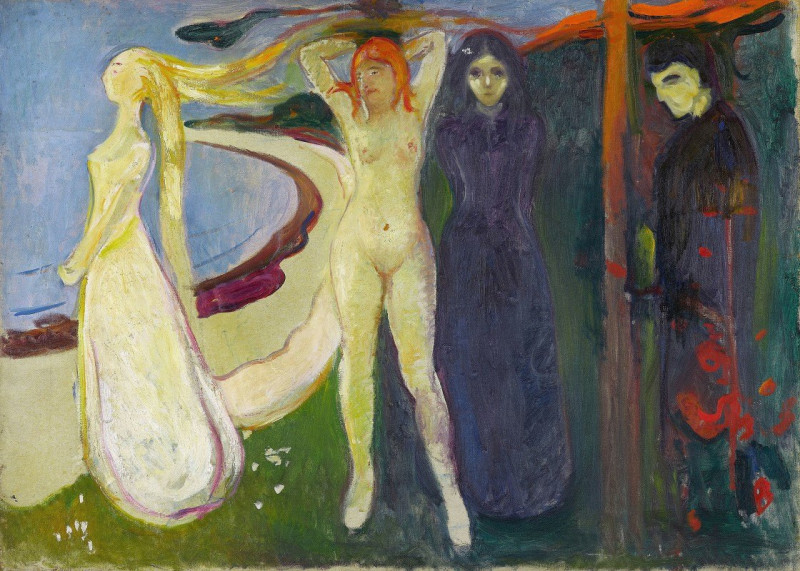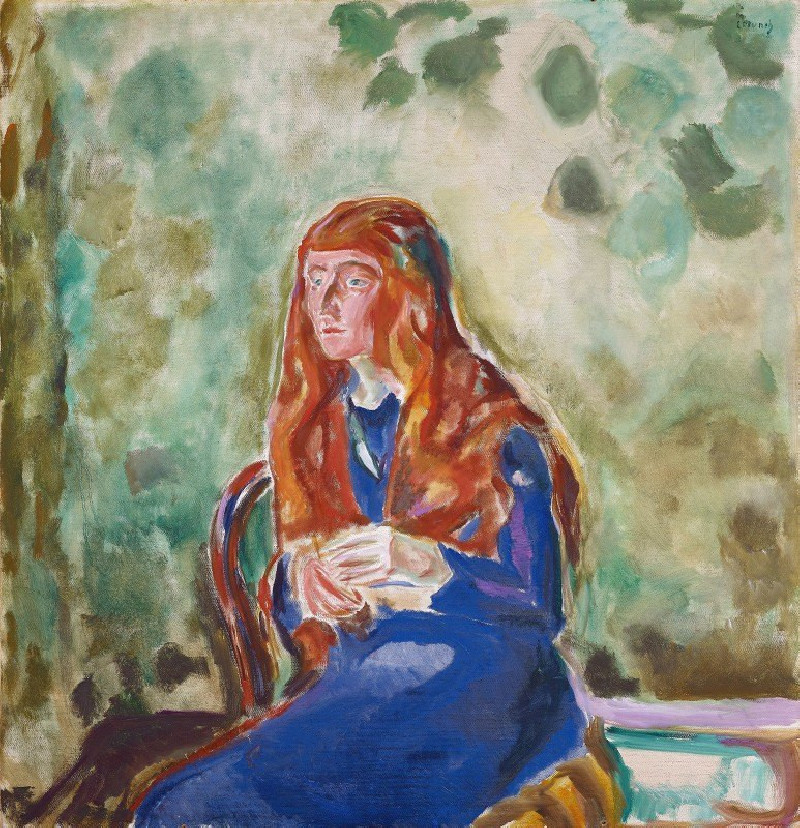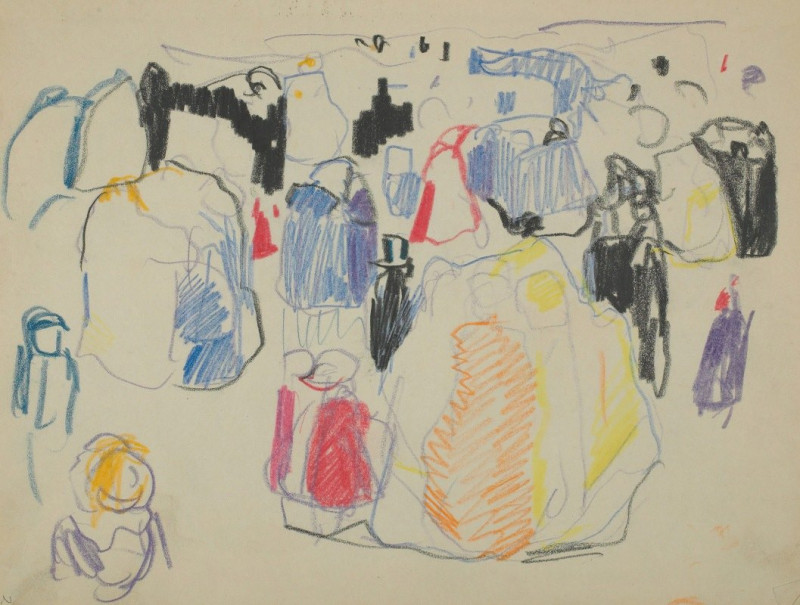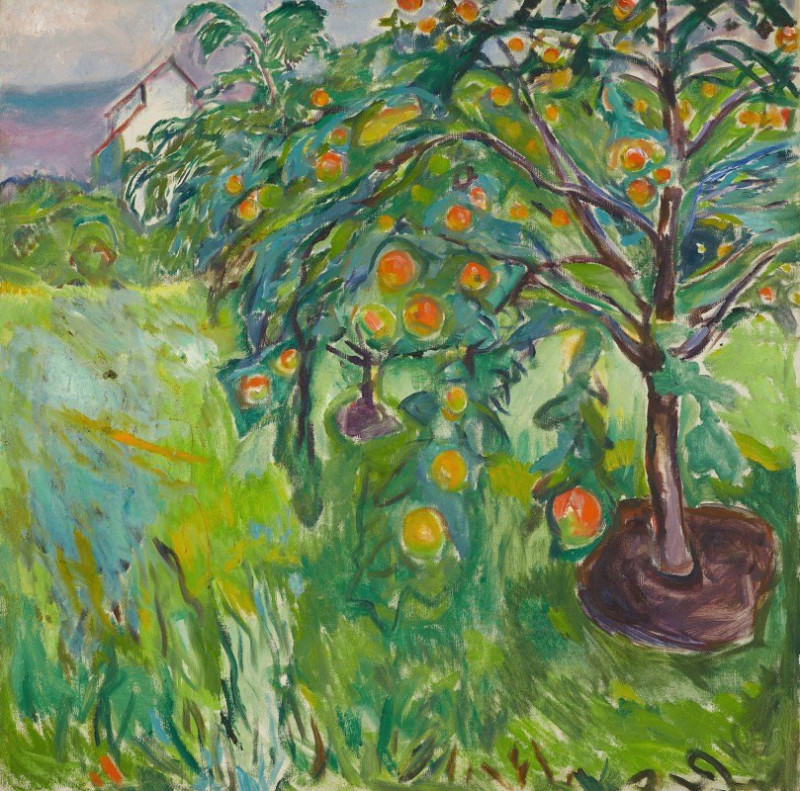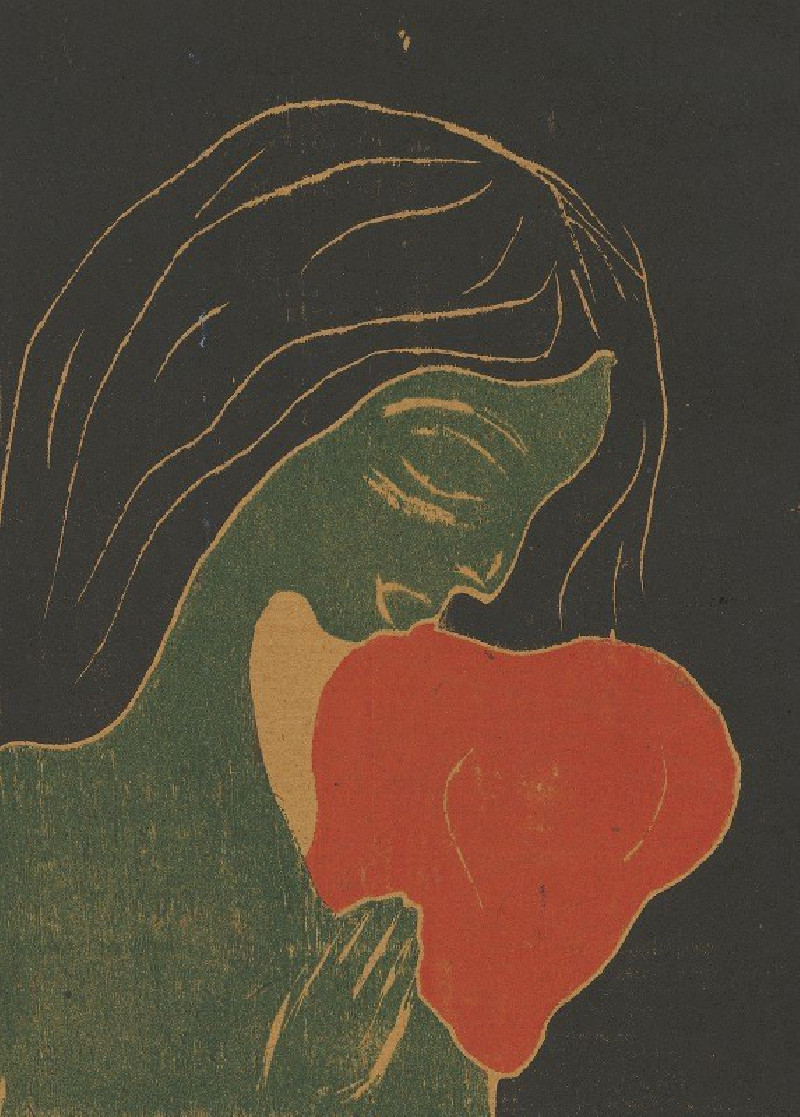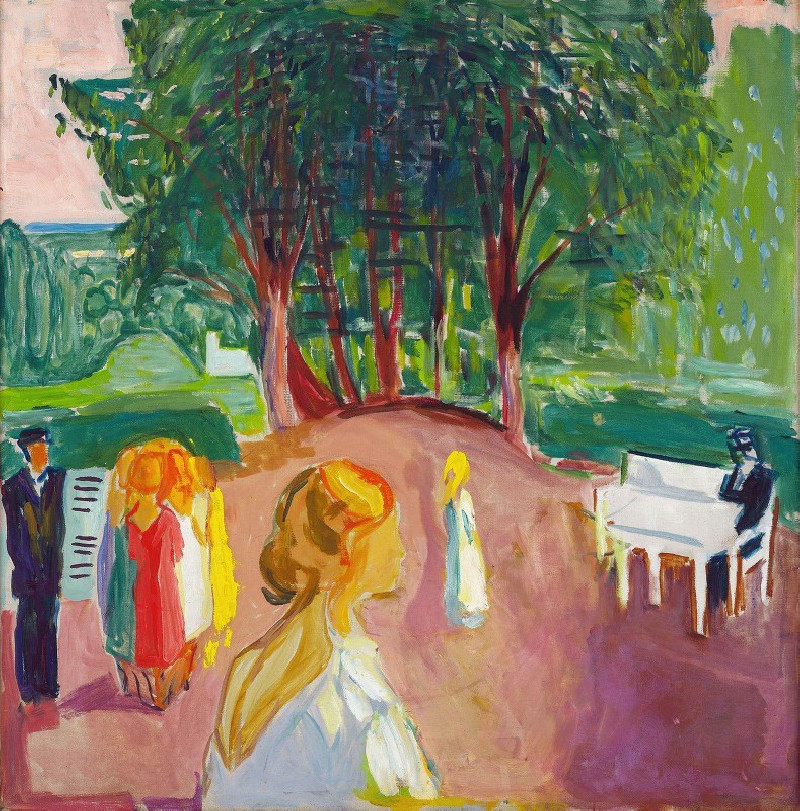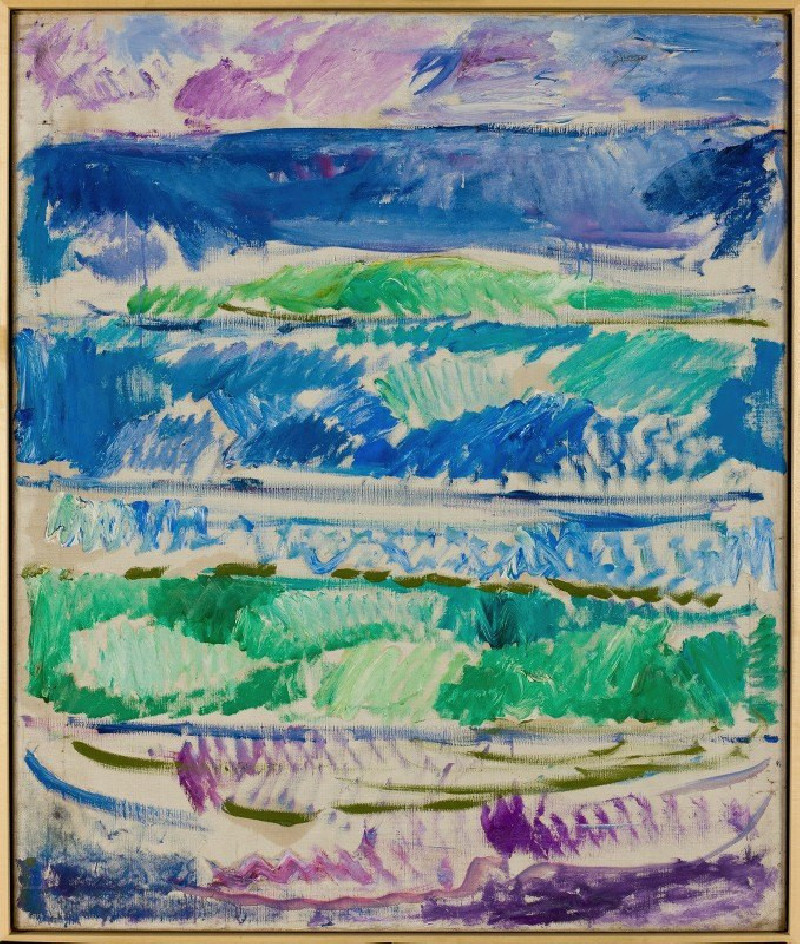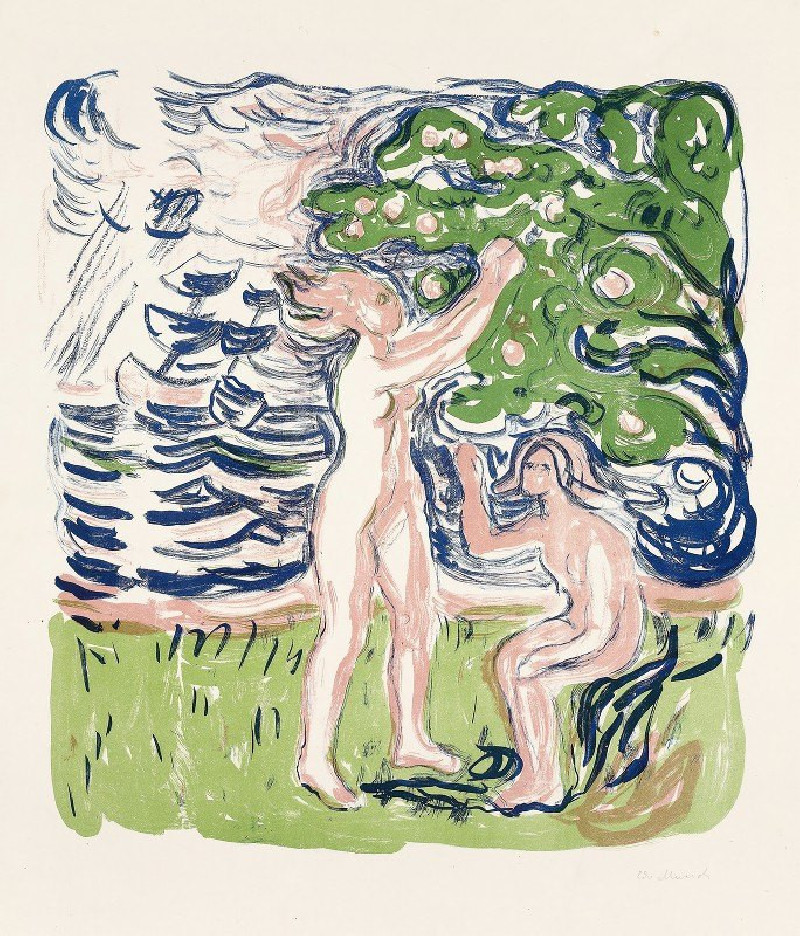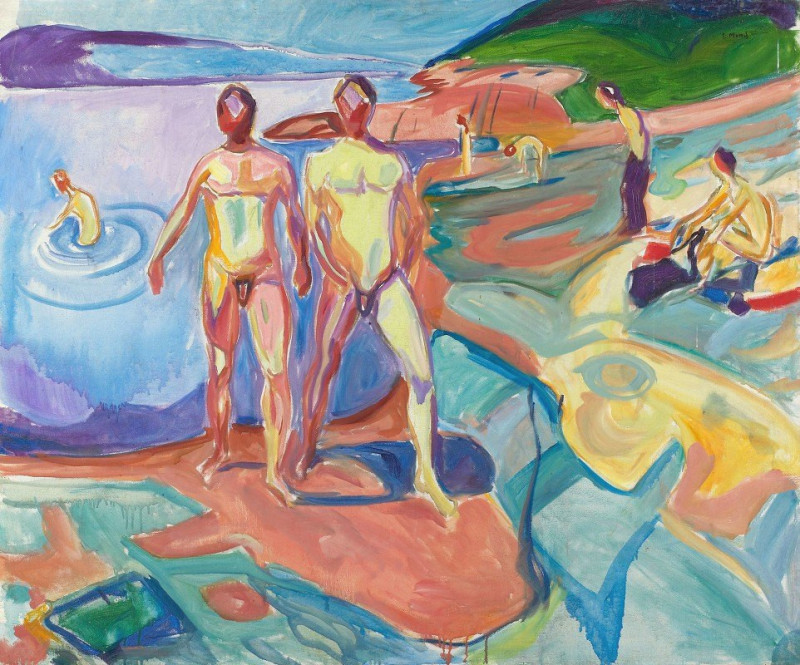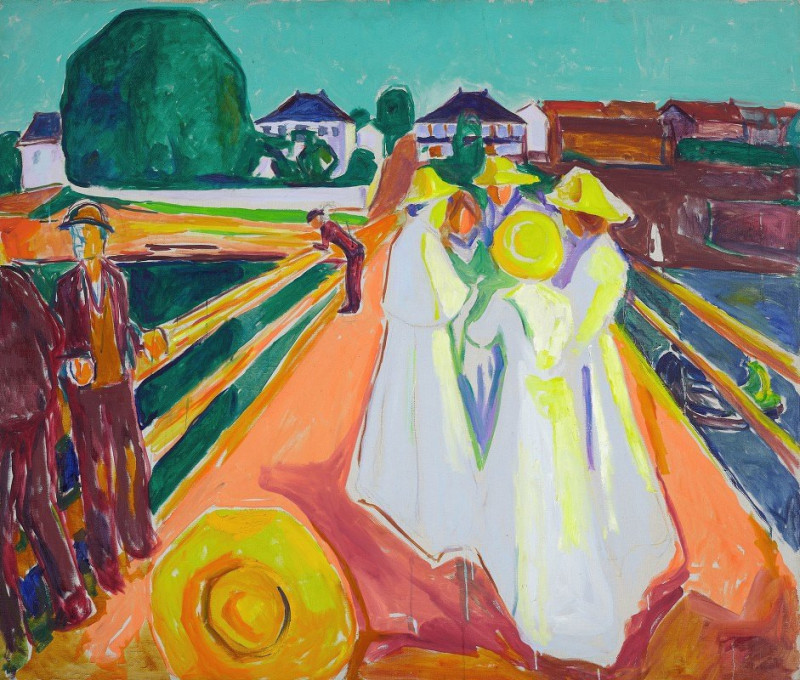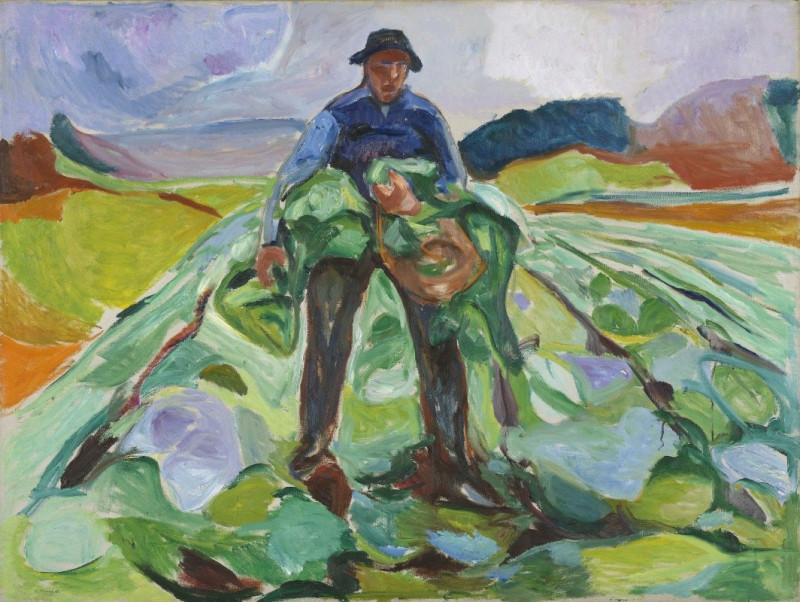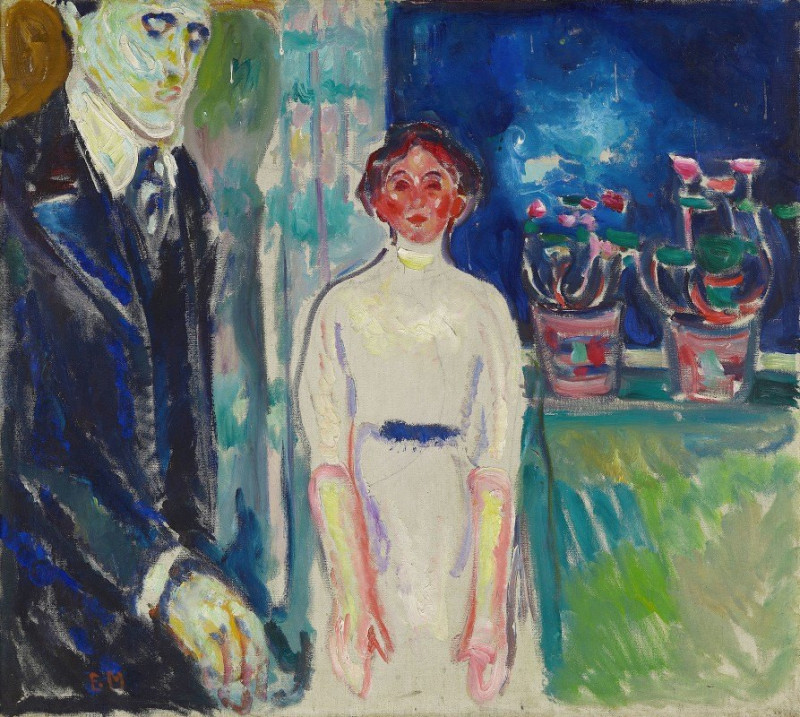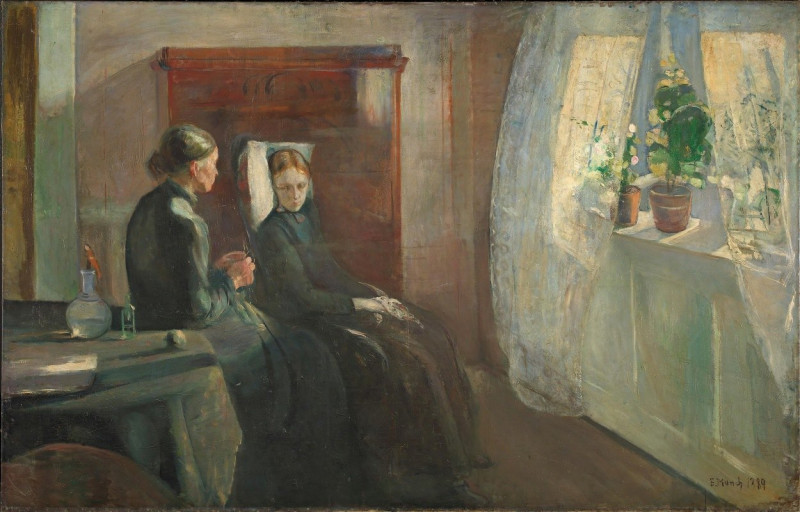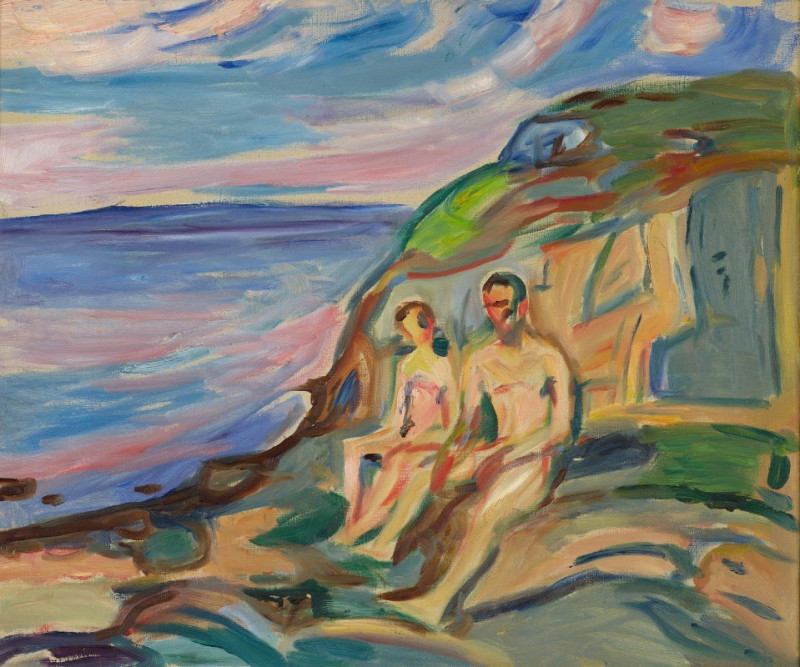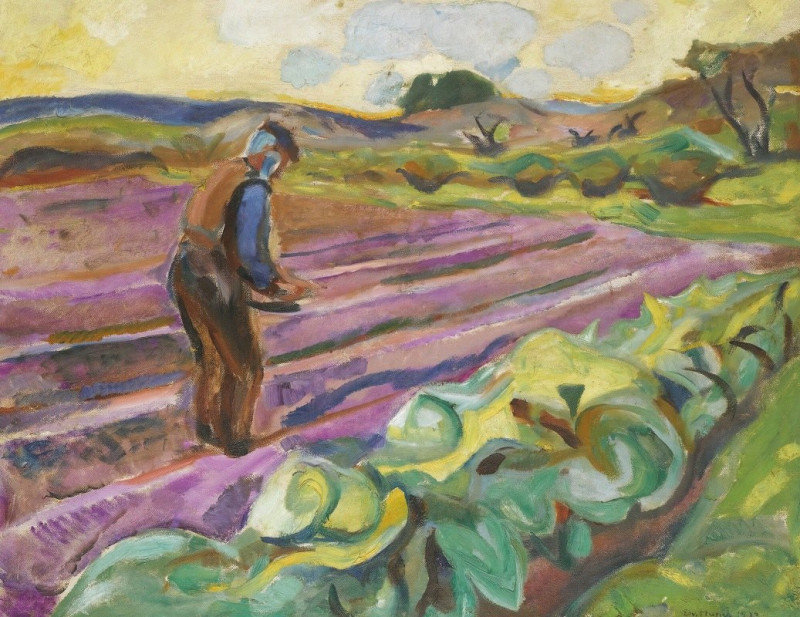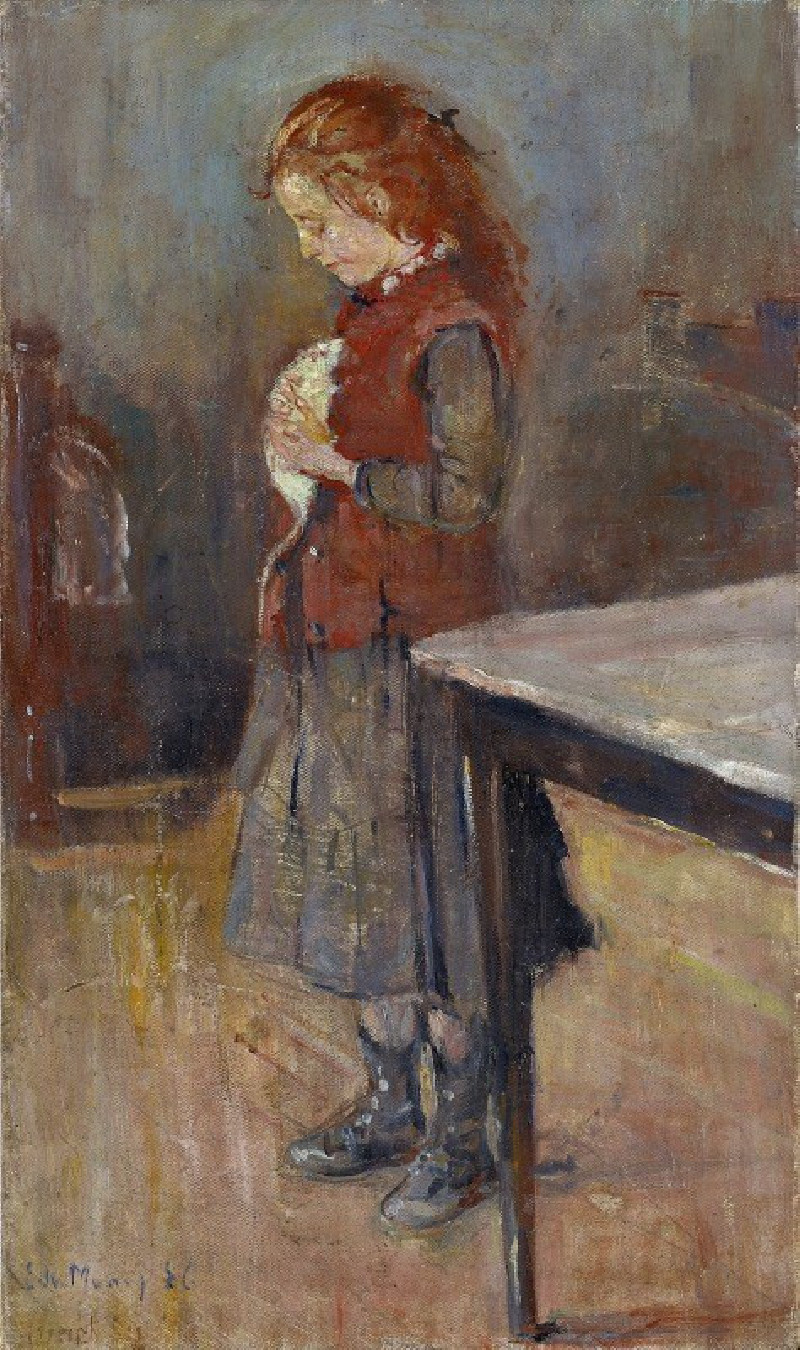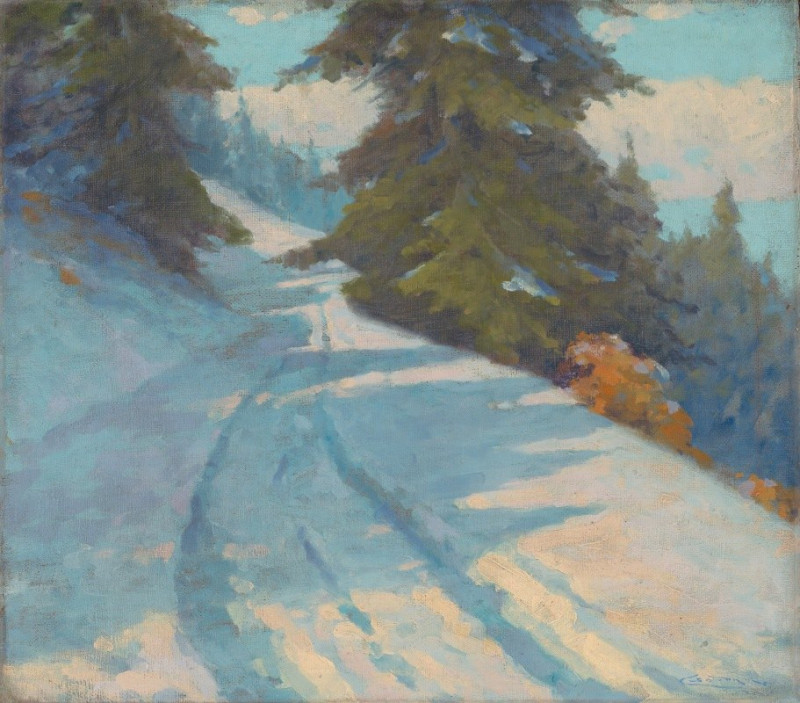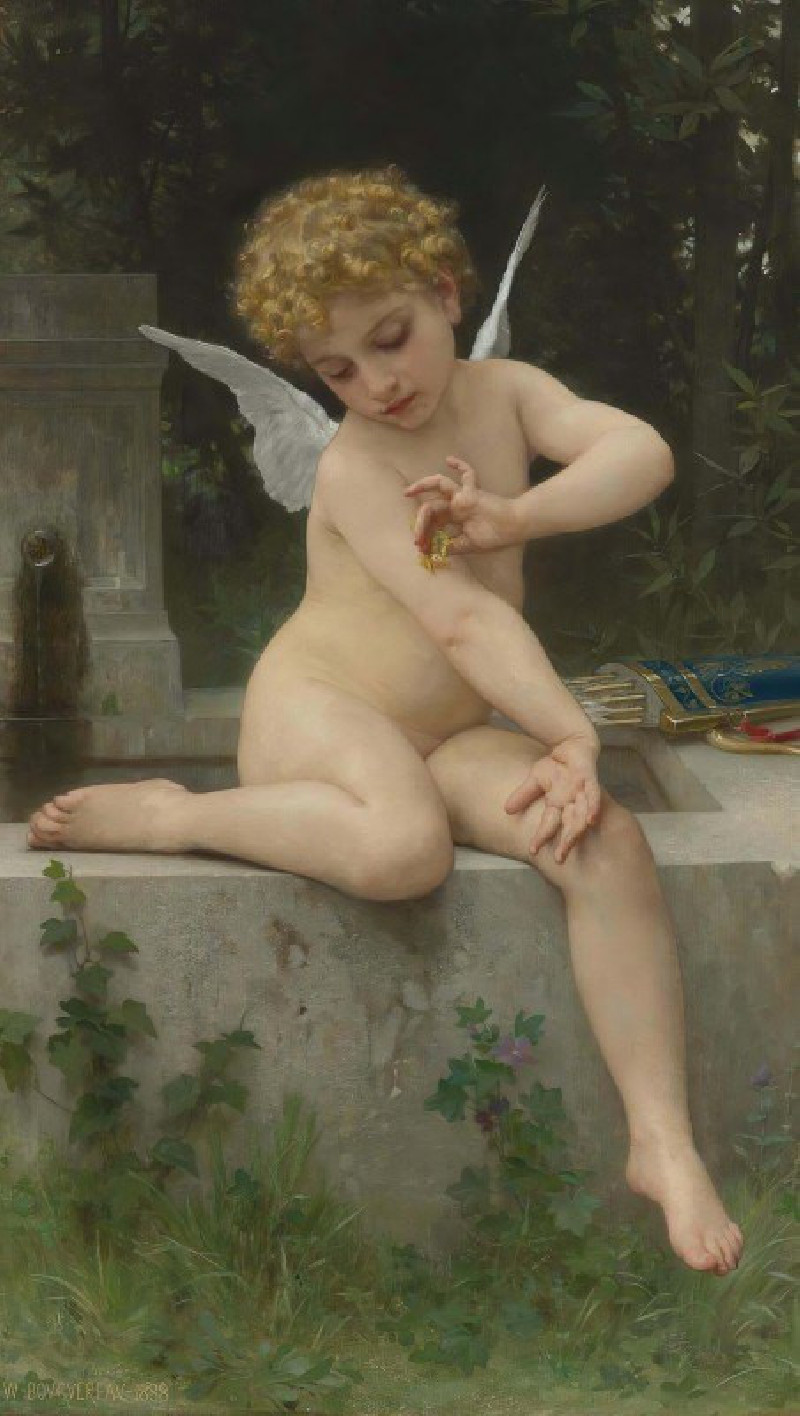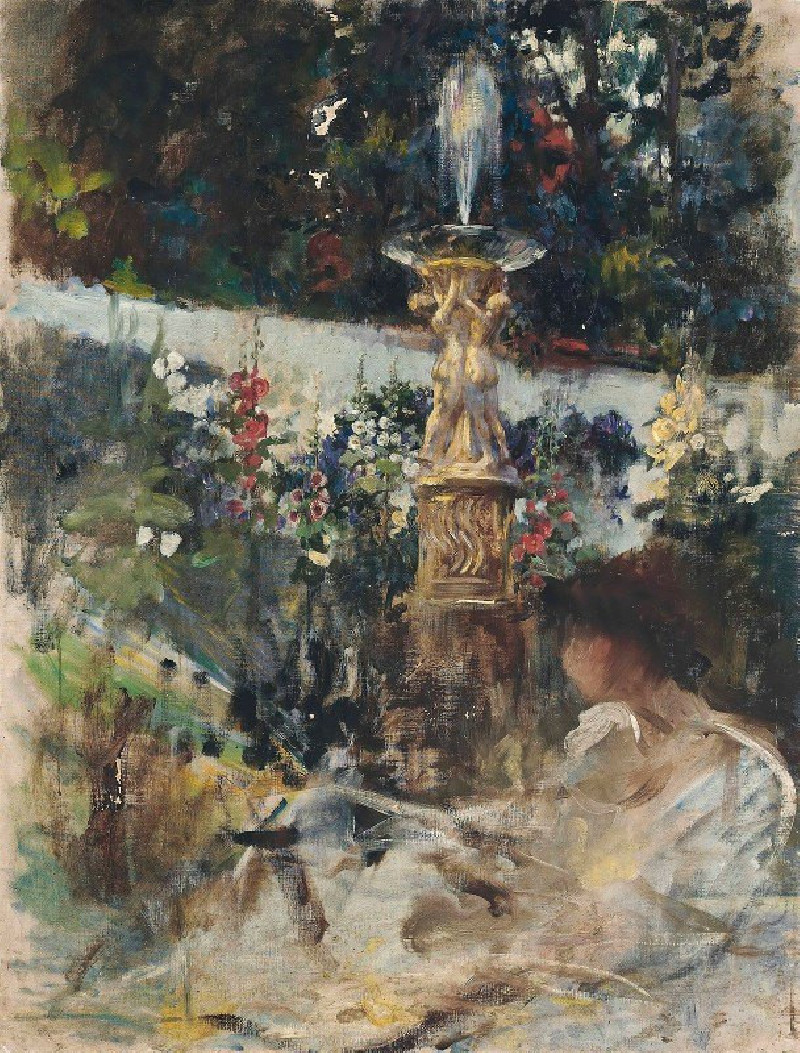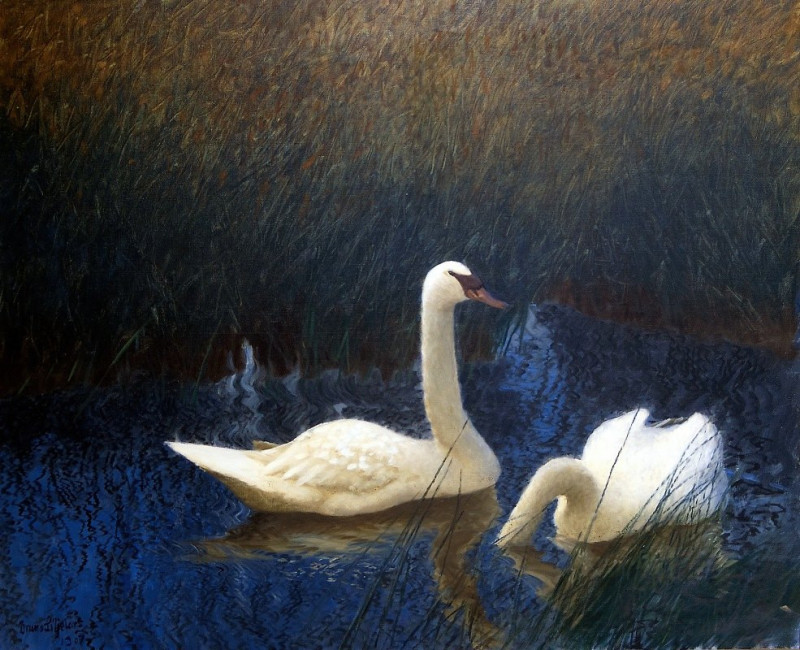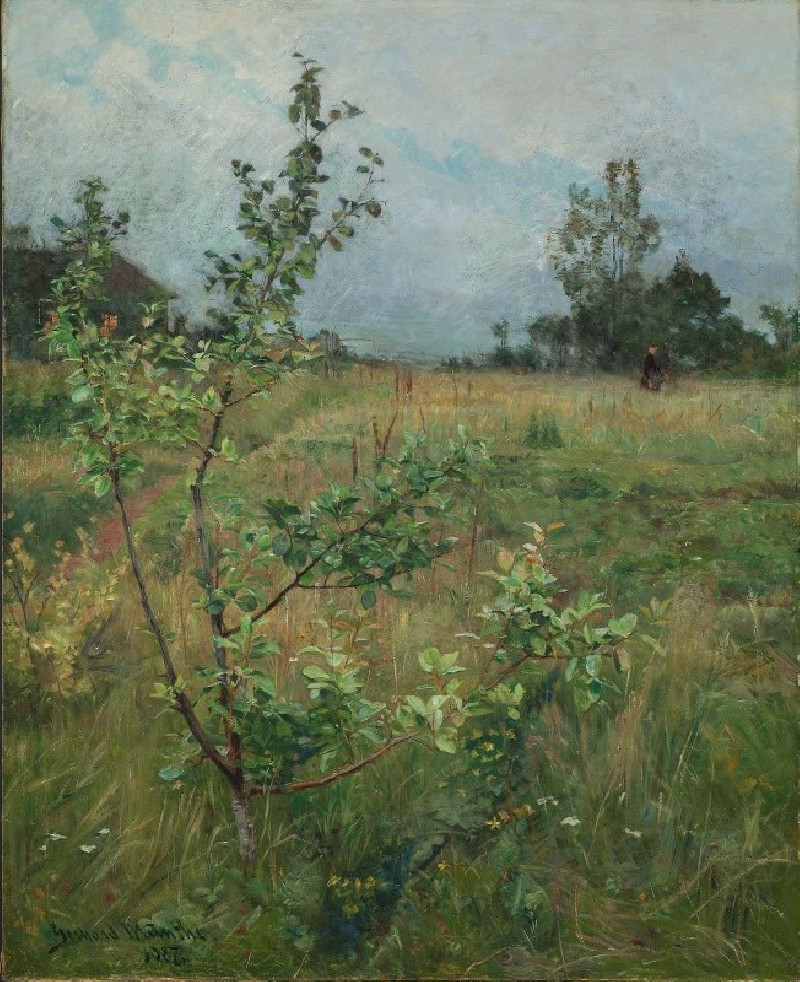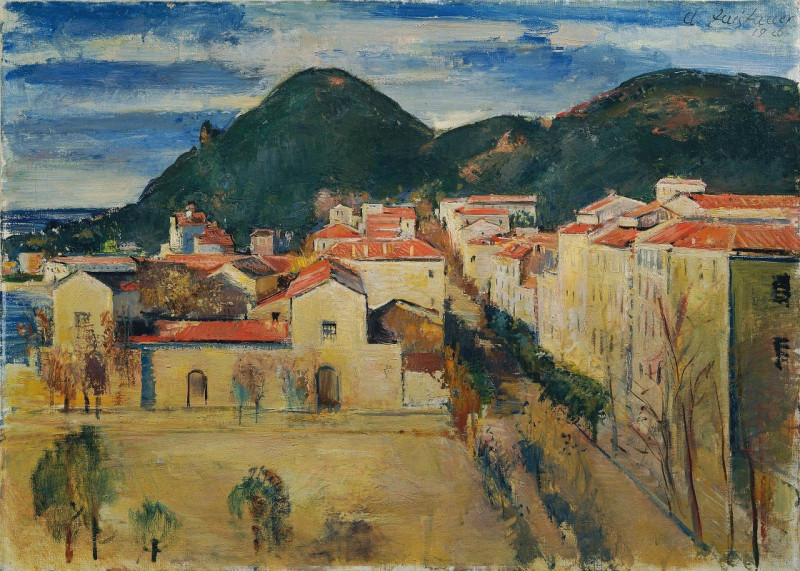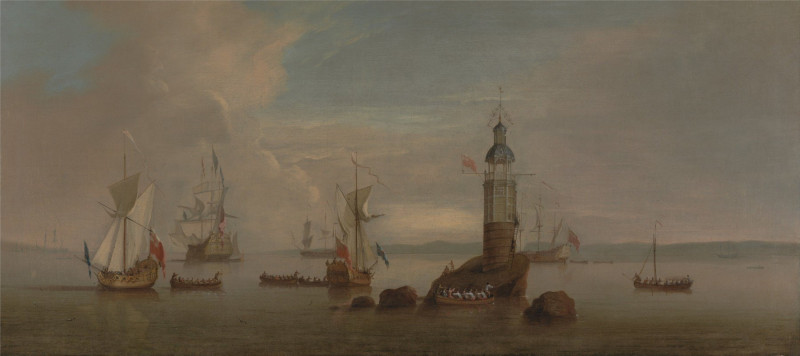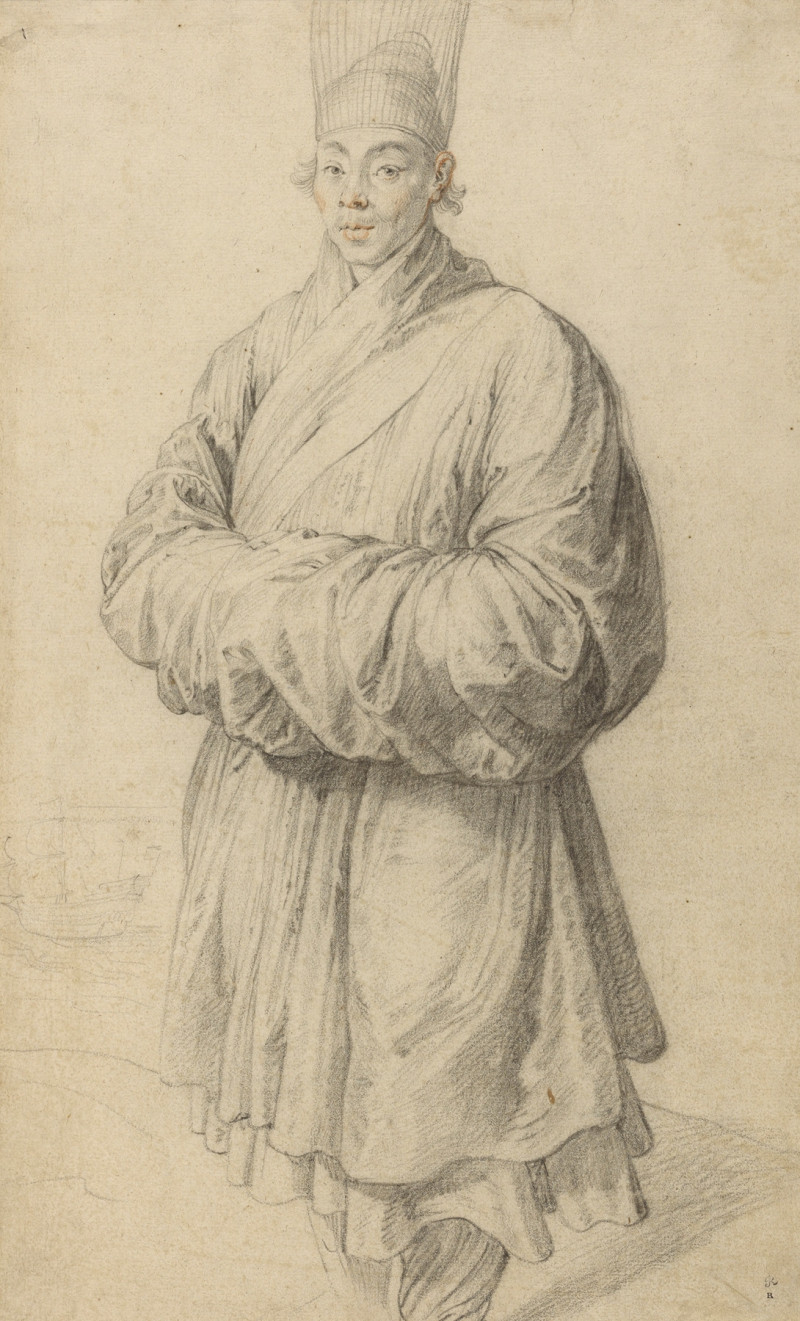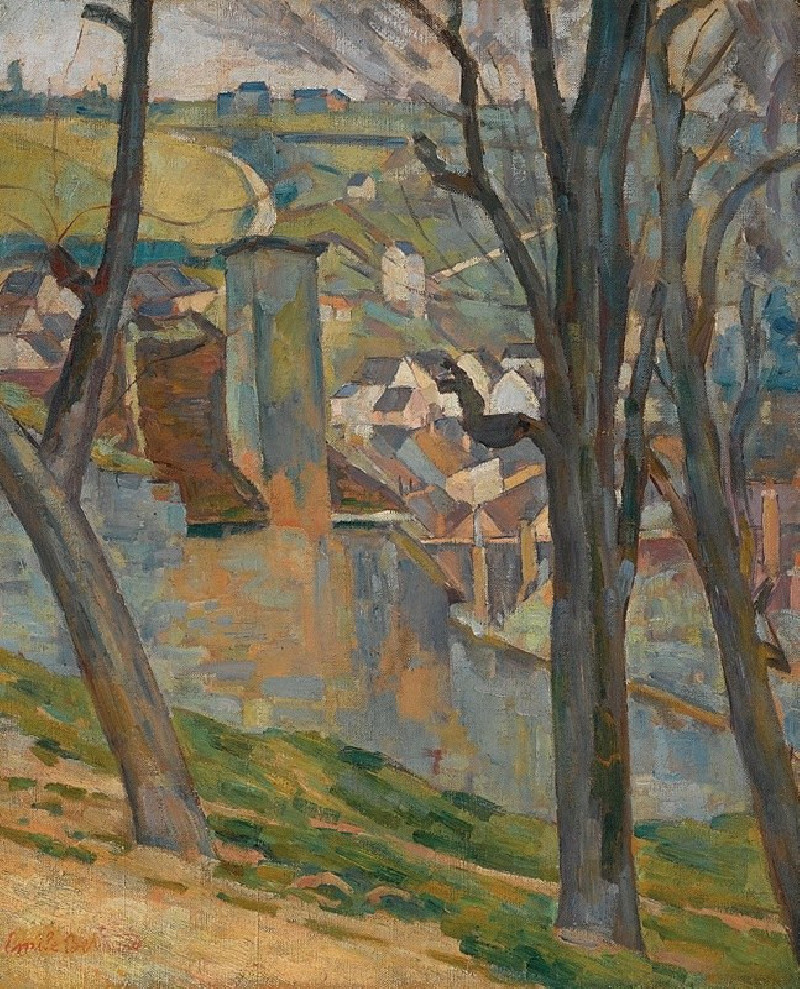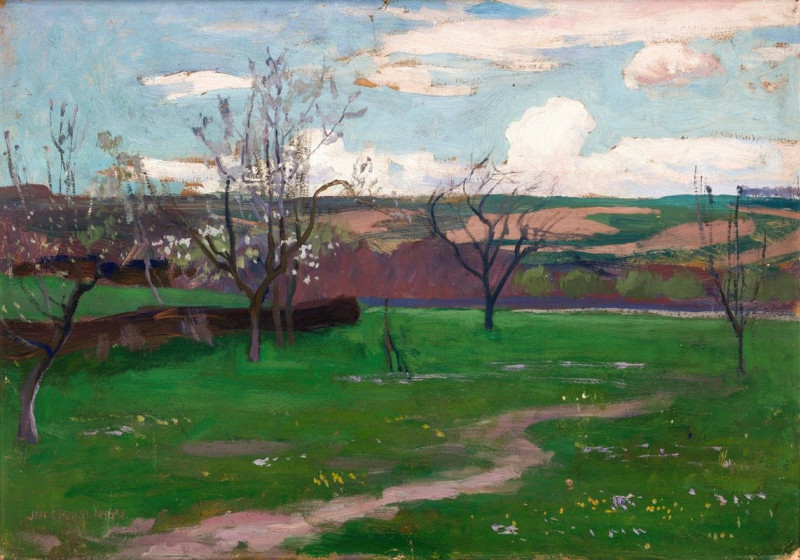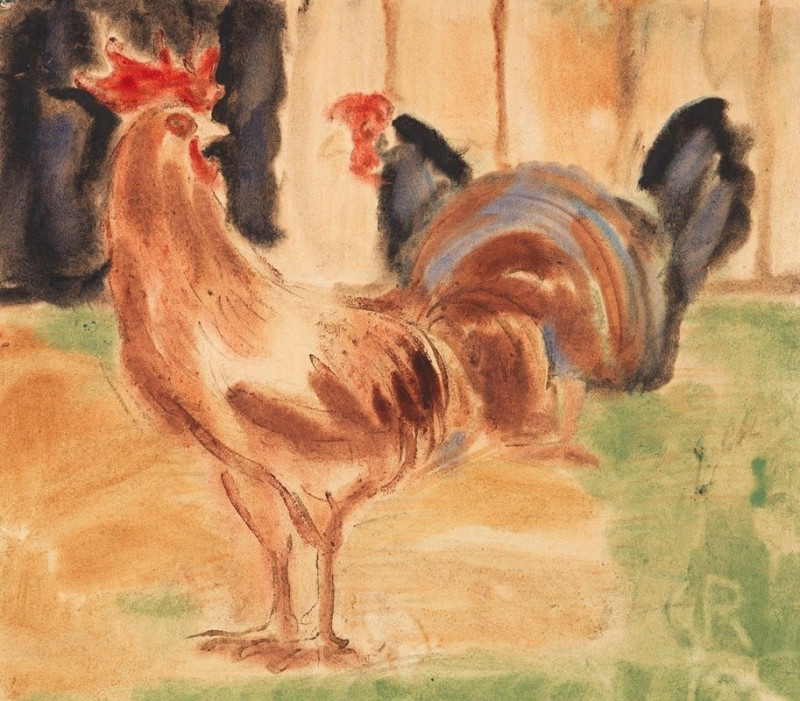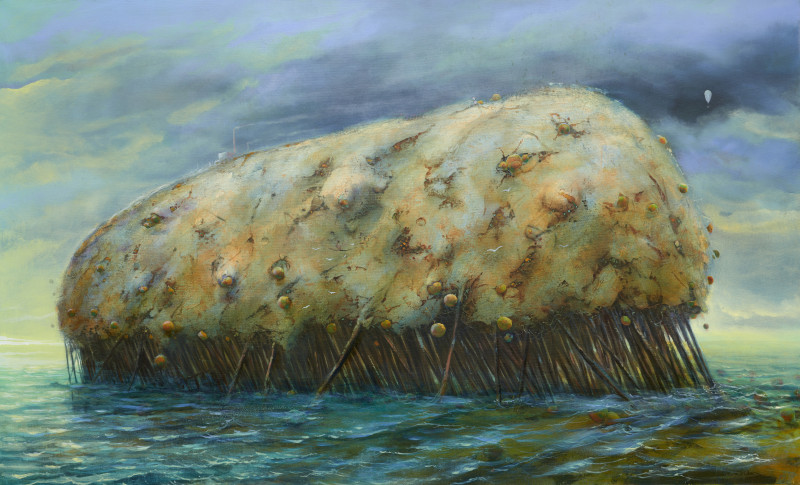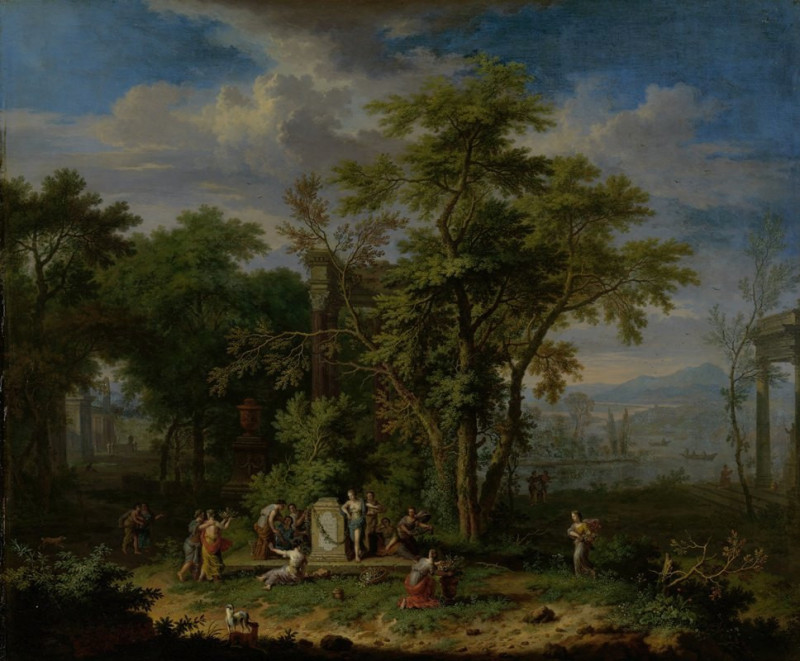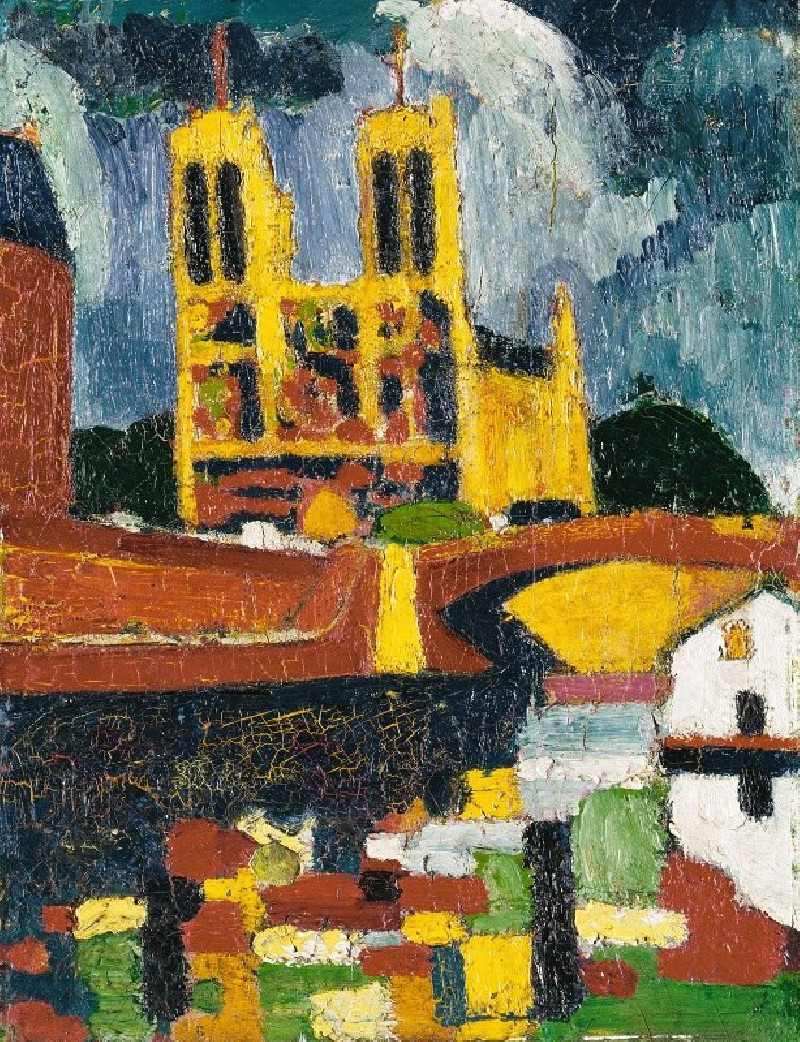The Death of the Bohemian (1915–20)
Technique: Giclée quality print
Recommended by our customers
More about this artwork
"The Death of the Bohemian" by Edvard Munch is an expressive and emotionally charged painting that uses vivid colors and abstract forms to depict a deep and somber narrative. In this artwork, there is a clear evocation of despair and frailty through the depiction of a figure who appears to be on a bed, suggesting sickness or a state of decline.The painting employs a range of colors with dominant reds and blues that might symbolically express vitality and melancholy, respectively. The way these colors clash and combine can be seen as reflecting the chaotic emotional states associated with illness and impending death. Drips and streaks of paint add to the sense of turbulence and instability.The figure itself is abstract; facial features are smeared and distorted, enhancing the sense of suffering and loss of identity. Beside the figure, there is another form, possibly representing a pillow or another part of the bed, rendered in raw, bold strokes, reinforcing the theme of distress.Displayed prominently in the painting are also abstract elements such as drips and swirls of paint in various colors across the canvas. These could be seen as representing the artist’s emotional response to the subject or symbolic of the life forces waning within the depicted figure.Overall, "The Death of the Bohemian" is characteristic of Munch's expressionistic style, focusing on the emotional resonance of the scene rather than a literal representation, seeking to capture the profound emotional experiences surrounding life, death, and human fragility.
Delivery
Returns
Edvard Munch (12 December 1863 – 23 January 1944) was a Norwegian painter. His best known work, The Scream (1893), has become one of Western art's most iconic images.
His childhood was overshadowed by illness, bereavement and the dread of inheriting a mental condition that ran in the family. Studying at the Royal School of Art and Design in Kristiania (today's Oslo), Munch began to live a bohemian life under the influence of the nihilist Hans Jæger, who urged him to paint his own emotional and psychological state ('soul painting'); from this emerged his distinctive style.

